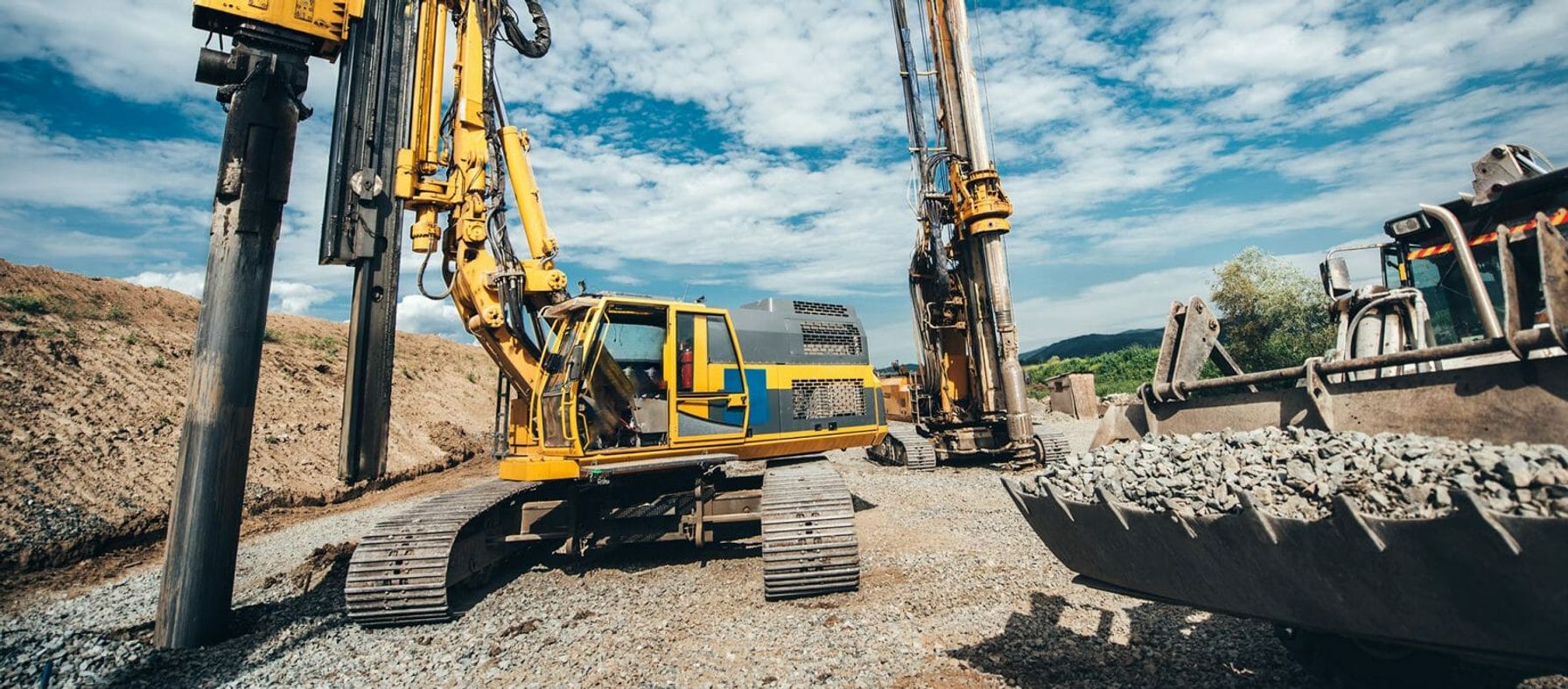The Basic Principles Of Geotheta
About Geotheta
Table of ContentsHow Geotheta can Save You Time, Stress, and Money.The Ultimate Guide To GeothetaGetting My Geotheta To WorkEverything about Geotheta10 Easy Facts About Geotheta Shown

They conduct site examinations, gather samples, carry out laboratory examinations, and evaluate information to evaluate the viability of the ground for construction jobs - Geotechnical Engineers. Based on their findings, geotechnical designers give recommendations for foundation style, slope stability, retaining frameworks, and reduction of geotechnical hazards. They collaborate with other experts, such as designers, structural engineers, and building teams, to make sure that geotechnical factors to consider are integrated into the overall job layout and application
By analyzing the actions and buildings of soil and rock, they can identify possible geotechnical threats such as landslides, dirt settlement, or slope instability. Their knowledge aids protect against failures or mishaps that might threaten lives and residential property. Right here are some detailed responsibilities and responsibilities of a geotechnical designer: Site Examination: Geotechnical engineers conduct site investigations to collect data on subsurface conditions.
They analyze the data to recognize the residential or commercial properties and behavior of the soil and rock, including their strength, leaks in the structure, compaction characteristics, and groundwater conditions. Geotechnical Evaluation and Style: Geotechnical designers evaluate the data collected during website investigations to examine the security and viability of the site for building and construction tasks. They do geotechnical estimations and modeling to examine elements such as bearing capability, negotiation, incline security, side earth pressures, and groundwater flow.
The Best Strategy To Use For Geotheta
Structure Layout: Geotechnical engineers play an important function in designing structures that can safely sustain the intended framework. They assess the soil problems and tons needs to determine the appropriate foundation kind, such as shallow structures (e.g., grounds), deep foundations (e.g (https://www.merchantcircle.com/blogs/geotheta-miami-fl/2024/8/Why-Geotechnical-Engineers-at-Geotheta-Are-Your-Best-Bet/2781881)., heaps), or specialized strategies like soil enhancement. They take into consideration aspects such as settlement limitations, bearing capacity, and soil-structure communication to develop optimum structure styles
They examine building plans, display site tasks, and conduct area examinations to verify that the layout suggestions are complied with. If unexpected geotechnical concerns develop, they evaluate the situation and offer recommendations for removal or modifications to the design. Threat Evaluation and Reduction: Geotechnical designers examine geotechnical risks and risks linked with the job website, such as landslides, liquefaction, or dirt disintegration.

Cooperation and Interaction: Geotechnical engineers work very closely with various other specialists associated with a job, such as architects, architectural engineers, and construction groups. Efficient communication and cooperation are important to incorporate geotechnical factors to consider right into the overall task style and building process. Geotechnical designers give technical experience, solution inquiries, and make certain that geotechnical demands are met.
Geotheta Fundamentals Explained
Right here are some kinds of geotechnical engineers: Foundation Engineer: Structure engineers focus on making and examining foundations for structures. They analyze the soil conditions, lots needs, and site features to establish one of the most proper foundation type and style, such as superficial structures, deep foundations, or specialized methods like heap structures.
They review the factors affecting incline stability, such as soil residential or commercial properties, groundwater conditions, and slope geometry, and develop approaches to avoid slope failures and alleviate threats. Quake Designer: Earthquake designers focus on examining and developing frameworks to endure seismic forces. They examine the seismic hazard of a website, evaluate soil liquefaction potential, and establish seismic design criteria to make sure the safety and security and resilience of frameworks throughout earthquakes.
They carry out field screening, collect samples, and assess the accumulated data to identify the soil residential properties, geologic developments, and groundwater conditions at a site. Geotechnical Instrumentation Designer: Geotechnical instrumentation engineers concentrate on monitoring and determining the habits of soil, rock, and structures. They set up and maintain instrumentation systems that keep track of variables such as dirt negotiation, groundwater degrees, slope activities, and architectural variations to analyze efficiency and give early cautions of possible concerns.
The Only Guide for Geotheta
They carry out tests such as triaxial tests, loan consolidation tests, straight shear examinations, and leaks in the structure tests to gather data for geotechnical analysis and layout. Geosynthetics Designer: Geosynthetics designers focus on the style and application of geosynthetic products, such as geotextiles, geogrids, and geomembranes. They use these products to enhance soil stability, strengthen inclines, give water drainage solutions, and control disintegration.
They tend to be investigatory people, which implies they're intellectual, reflective, and analytical. They are interested, methodical, sensible, logical, and rational. Several of them are additionally social, suggesting they're kind, charitable, participating, patient, caring, practical, understanding, sensible, and friendly. Does this seem like you? Take our cost-free career test to figure out if geotechnical designer is one of your leading profession matches.
In the workplace setting, geotechnical designers make use of specialized software program tools to carry out calculations, create layouts, and assess information. They prepare records, review task specs, connect with customers and staff member, and coordinate task activities. The office setup gives a favorable environment for study, analysis, and cooperation with various other professionals associated with the task.
Excitement About Geotheta
They regularly visit job websites to perform website examinations, evaluate geotechnical problems, and gather data for analysis. These sees involve traveling to different places, occasionally in remote or difficult terrains. Geotechnical engineers might execute soil tasting, conduct tests, and screen construction tasks to ensure that the geotechnical elements of the job are being implemented properly.
Geotechnical engineers likewise More Help function in specialized geotechnical labs. Geotechnical research laboratory engineers work thoroughly in these settings, taking care of screening tools, operating tools, and videotaping data.